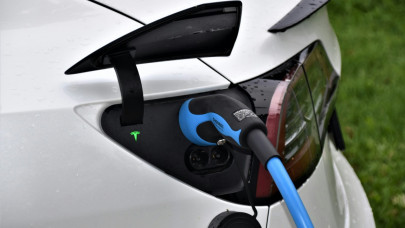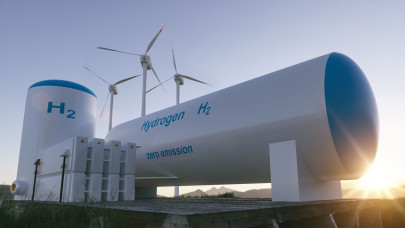Considering the most recent Mazars' report about the challenges of turning sustainability goals into reality for company leaders, how do you help companies in Romania bridge that gap and get practical with sustainability initiatives?
Understanding regulation comes next on the list of challenges, having leaped from 21% last year to 31% this year. The arrival of new regulations, such as the EU's Corporate Sustainability Reporting Directive (CSRD), also appears to be having an impact here, as the challenge of understanding regulation is felt most in Europe (35%).
The big change is in human rights where we see a distinct increase – 37% say they lack expertise vs 27% last year. This area is becoming even more complex. Leaders are feeling it as we see a growing lack of expertise in governance too.
In the Romanian market, we observe similar developments. Most resources are currently directed toward comprehending, quantifying, and disclosing climate vulnerabilities, carbon footprints, and alignment with green taxonomy. However, addressing value chain impacts remains a pervasive challenge for companies across various sectors, with efforts in this area still in their early stages.
In addition, Sustainability Reporting is another significant concern for Romanian companies, as reports must meet both legal requirements (especially with the new development of CSRD and its related standards) and stakeholder expectations.
In your experience, what are some successful strategies or initiatives that companies in Romania have implemented to effectively transition towards sustainability and meet the upcoming requirements for sustainability reporting?
Successful companies have understood that sustainability is a complex challenge that needs to be addressed quickly and for which there is no silver bullet. They have opted for a problem-solving approach, at the same time ensuring they identify and capitalize on significant opportunities arising from the green transition.
Therefore, they implement a structured program on material impacts, risks, and opportunities. This entails appointing senior management accountable for sustainability objectives and action plans, supported by dedicated sustainability leaders empowered with authority to drive change throughout the company.
Moreover, these companies ensure sustainability is integrated into their operations, maintaining momentum and fostering a culture of sustainability across all hierarchical levels.
Crucially, these organizations possess a keen ability to identify a wide array of opportunities arising from the ongoing green transition, ranging from renewable energy investments to sustainable product innovations and supply chain optimizations. They actively engage with decision-makers across various departments and levels of the organization to collaboratively devise innovative solutions tailored to capitalize on these opportunities. This collaborative approach ensures that sustainability initiatives are aligned with broader business goals and effectively integrated into strategic decision-making processes.
When sustainability is seen as an investment, rather than a cost, the likelihood of obtaining a return on this investment is significantly higher.
Considering the potential risks and opportunities associated with sustainability initiatives and regulatory changes, how do you advise companies to prioritize their efforts and allocate resources to ensure long-term success and compliance in the evolving business landscape of Romania?
There is no one-size-fits-all solution to talking about the sustainability impacts, risks, and opportunities.
Each company needs to identify the most significant ones and concentrate their investments accordingly. However, navigating this process proves more complex than anticipated by companies, particularly in the initial stages. They must dedicate time to comprehend sustainability concepts before delving into the evaluation of impacts, risks, and opportunities. As an example for this context, during the last couple of years, companies might have found themselves grappling for the first time with concepts like ‘protecting biodiversity' and understanding how their operations and value chains might affect bird migration patterns.
When the highest sustainability impacts, risks, and opportunities are identified, then it becomes natural for the companies how to allocate the resources wisely, seeking the greatest benefits with the least investment.
This might involve investing in renewable energy, enhancing supply chain transparency, or implementing social impact initiatives. Regular monitoring and measurement of progress using key performance indicators (KPIs) allow companies to track performance and demonstrate progress to stakeholders.
Furthermore, continuous adaptation and innovation are crucial for sustainability success. Companies must continually adjust their strategies and initiatives based on evolving priorities, emerging risks, and stakeholder feedback. This ensures that they remain responsive to changing sustainability trends and challenges, driving ongoing improvement and value creation.
Starting from 2025, companies will be required to publish a sustainability report. What are the risks for companies that do not comply with the new procedures? What are the first changes that companies should make?
These standards are to be applied across the EU by all the companies in the scope of CSRD. Indeed, the failure to adhere to these new requirements carries several risks that companies must consider. Firstly, non-compliance poses a threat to a company's reputation. Failure to meet sustainability reporting requirements can lead to a loss of trust among stakeholders, including investors, customers, and employees. This erosion of trust can have long-lasting repercussions on the company's brand and image.
Secondly, there are legal and regulatory consequences for companies that do not comply with sustainability reporting mandates. Especially in the context of the fact that these Reports will need to be audited.
Financial risks also loom large for companies that fail to comply. Non-compliance can lead to increased borrowing costs, reduced access to capital, and missed investment opportunities, ultimately impacting the company's bottom line.
To ensure compliance with the new sustainability reporting requirements and mitigate associated risks, we recommend the following first steps:
· Conducting a double materiality assessment: This involves identifying the company's material impacts, risks, and opportunities across environmental, social, and governance dimensions in its operations and accessing its value chain.
· Identifying information for reporting: Based on the assessment results, companies should identify the relevant information to be reported by the 12 European Sustainability Reporting Standards (ESRS) currently published.
· Performing a gap analysis: Companies should then conduct a gap analysis to understand how they can obtain the necessary information for reporting and identify steps to address any gaps. It is advisable to conduct these steps promptly to allow each department to incorporate processes and data quality checks to ensure the accuracy and relevance of the reported data.
· Finally, investing in training and capacity-building initiatives is vital to ensure that employees have the necessary skills and knowledge to effectively manage sustainability reporting processes.
Romania has a lot of potential for various renewable energy sources. How do you think this field and investments will evolve this year, but perhaps also in the next 5 years? Will we see fewer investments in this regard?
Romania holds significant potential as a country, including in terms of its geographical positioning for harnessing renewable resources to generate electricity. High-intensity winds in regions like Dobrogea have attracted investments, leading to the implementation of major wind energy projects. Moreover, the country's widespread high values of solar radiation intensity have driven the development of photovoltaic power centers, whether installed on the roofs of commercial or residential buildings or on the ground.
Mazars' study, Investing in CEE: Inbound M&A report 2023/2024, includes practical examples of investments, showcasing notable transactions in Romania during 2023. This year, Romania is positioned to continue advancing its renewable energy capabilities, driven by several compelling factors. Firstly, the global push towards sustainability is influencing local markets and policies, making renewable energy projects more appealing. Secondly, the European Union's stringent targets for reducing carbon emissions encourage member states, including Romania, to prioritize green energy solutions. Thus, the financial incentives and subsidies from the EU and the national government are likely to boost investment in this sector.
Looking ahead over the next five years, the trajectory for Romania's renewable energy investments appears even more promising. The cost of renewable technologies, especially solar and wind, is decreasing, which enhances the economic appeal of these investments. Additionally, advancements in energy storage and smart grid technologies will likely facilitate a smoother integration of renewable sources into the national grid, addressing some of the traditional barriers to scalability:
· The European Green Deal and Romania's National Recovery and Resilience Plan (PNRR) lay a solid groundwork for substantial investments aimed at energy transformation. These plans not only provide financial backing but also a strategic direction for achieving a greener energy mix by 2030.
· The fourth priority in Romania's Sustainable Development Program 2021-2027 focuses on enhancing energy efficiency, developing smart energy systems and networks, and reducing greenhouse gas emissions.
There are also some potential challenges, despite the optimistic outlook. To mention a few: regulatory changes, market volatility, and the technical limitations of the current grid infrastructure could impact the pace of growth in renewable investments. To counteract these, Romania will need to ensure a stable policy environment and possibly invest in enhancing its grid capacity to handle increased renewable outputs.
Which industries will find it easiest to transition to going green and which ones less so? And how will these industries adapt to the new legislation? What are the steps they need to take
Transitioning to sustainable practices will vary across industries, with some finding it easier than others. Industries like renewable energy may face fewer obstacles due to existing eco-friendly technologies, while those heavily reliant on fossil fuels, such as oil and gas, heavy manufacturing, or aviation, may encounter greater challenges.
For industries adept at transitioning, adapting to new legislation involves investing in renewable energy sources, implementing energy-efficient technologies, and redesigning products for minimal environmental impact. They may also prioritize supply chain transparency and ethical sourcing practices to meet regulatory requirements.














